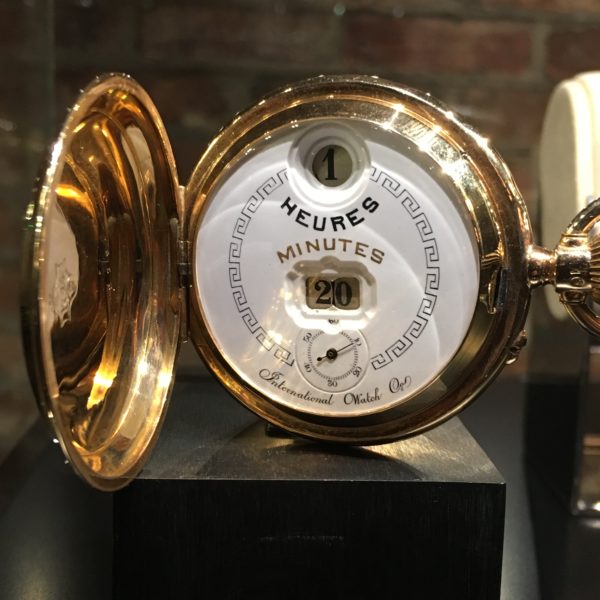The design of each watch is based on the antique Pallweber pocket watch first produced in 1884 (above). These watches were best known by their rare digital watch displays, a trait that, while fairly common today in mechanical pieces (jumping hours and minutes), has never really experienced a “golden age.” The original Pallwebers also had white enamel dials, which have assisted in maintaining those few examples that have survived in pristine aesthetic condition, and rose gold cases, a feature itself somewhat rare in an era of case materials dominated by yellow gold, brass, and later, steel.
The wristwatch designs use a 45-mm case available in one of the three metals, limited to 25 examples in platinum, 250 in rose gold, and 500 in steel. The case is wide and flat with a rounded bezel and a vintage-inspired almost onion-style crown. Each of the lacquered dials are inspired by the enamel material of years past, with the purpose of maintaining a timeless appearance for potentially hundreds of years to come. On these dials is a smaller inner ring connecting the digital hour display towards 12 o’clock to a small seconds sub-dial where 6 o’clock would be, with a digital minute display near the center. Between the digital displays are rounded “hours” and “minutes” scripts, a feature directly harkening back to the German spelling seen on the original Pallwebers. Within the wristwatches is the IWC-manufactured 94200 caliber specially developed for this run; this movement is manual winding, has a power reserve of up to 60-hours, and is visible with all its decorations through a sapphire case back. Pricing is still unavailable, however, the rose gold edition has been rumored to be priced at $36,600 once it hits the market.
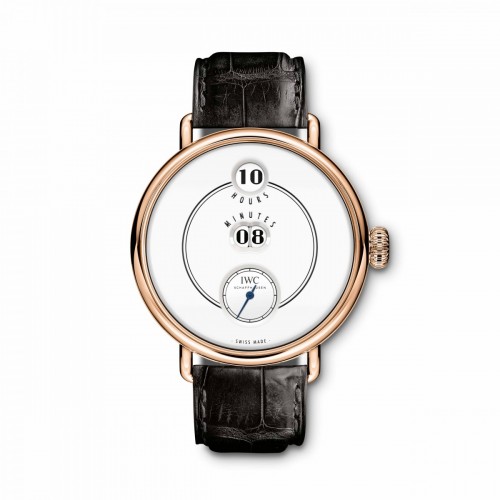
The pocket watch design holds many similarities to the wristwatch-style but differentiates itself significantly with its case. This watch, limited to 50 pieces, plays more strongly on the designs of the 1890 discontinued Pallweber, notably with its 52-mm size in rose gold, guilloché case decorations, large onion crown, and accompanying rose gold chain. The dial of the watch is the exact same as the rose gold wristwatch model, with its lacquered style and digital face, however, is slightly different in that the time display is visible through two windows on the spring cover, which allows the time to be read even when the case is closed. The movement for the pocket watch is also the 94200 caliber, but this time the manually-wound mechanism is only visible through a sapphire case back by first opening the piece’s backside dust cover. Pricing for this watch currently unavailable.
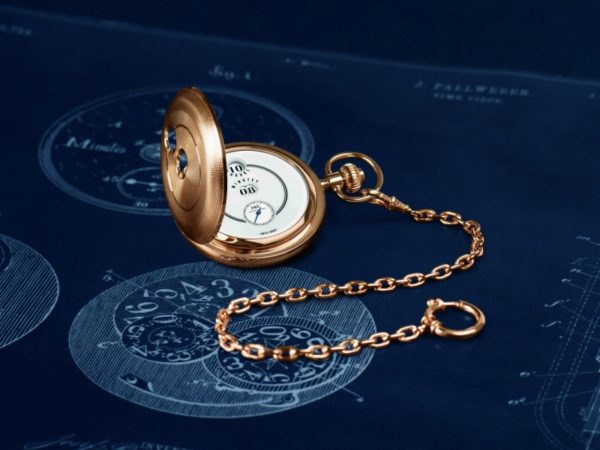
Of the differences from the original pocket watch to these new designs, there’s not much room for criticism, as the brand maintains two large benefits in crafting its homage. First, the Pallweber has been out of production for 127 years, so the memory of its original design is pretty slim. Second, for the absence of this historical piece from the market’s collective memory, the brand still developed two new watch styles inspired by a design that was in all likelihood before its time using the digital display, but in recent years has found a small revival thanks to designs produced by A. Lange & Söhne such as the Zeitwerk.
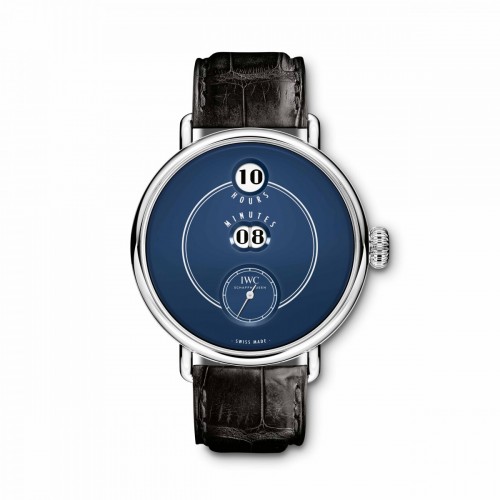
The most notable difference is in the use of lacquering in the modern pieces instead of the “grand feu” enameling that was likely used for the original watch, yet still the finishing is essentially the same with a significant reduction in fragility, with only subtle changes in the degree of indentation for the hour and minute windows. Along these lines of bringing a relatively unknown watch into a modern context, the contemporary designs use a smaller English spelling for the hours and minutes scripts as compared to German, a less intricate circle on the dial, and a more modern style seconds subdial using the contemporary IWC logo compared to the vintage “International Watch Company.”

In this spirit, the wristwatch design strayed away from a large onion crown and made the case relatively flat, but included a vintage-inspired dial design, rounded the edges of the bezel, and included vintage style lugs reminiscent of the welded style from the dawn of the wristwatch. None of these are exactly historically correct, but they don’t need to be — the watches act as homages and not replicas. Then of the pocket watch— which by its natural design is a more direct tribute to the original piece— viewing windows and an intricate guilloché pattern were added to the dial, a viewing window was added to the dust cover to view the modern intricacies of the movement, and, like the wristwatch, the dial features have been adjusted.
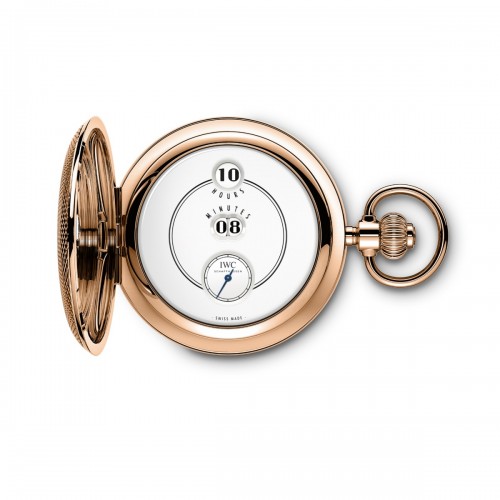
In my opinion, what’s most significant about these new watches is not that IWC has existed as a brand for 150 years, but instead that they not only released pocket watch inspired pieces — which have become somewhat more common over the past few years — but also released a true pocket watch, which definitely isn’t too popular. Overall, the development of the Tribute to Pallweber series is a rare showing of innovation by a major consumer brand like IWC, even if it was historically inspired by a 120-year-old watch.

For the most recent article in the “Vintage Eye” series, in which we compare the Timex Marlin to its historical predecessor, click here.
Caleb Anderson is a freelance writer with a primary focus on vintage watches. Since first learning about horology, he has garnered extensive knowledge in the field and spends much of his time sharing his opinions among other writers, collectors, and dealers. Currently located near New York City, he is a persistent student in all things historical, a writer on many topics, and a casual runner.

